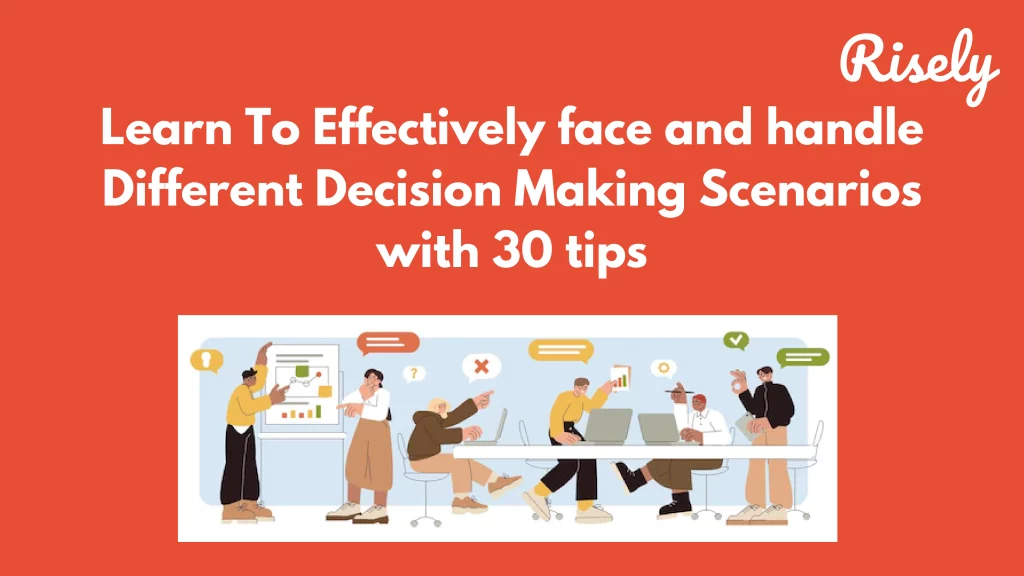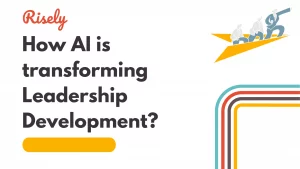In life, we are constantly faced with decisions to make, and the choices we make can significantly impact our lives and the lives of others. In some scenarios, decision making can be particularly challenging, such as during times of stress, when faced with ethical dilemmas, or making tough choices. Being able to handle these situations effectively is crucial for personal and professional success.
This blog will explore different decision making scenarios and provide practical advice on navigating them effectively. We will discuss the challenges associated with each scenario and provide tips on identifying and evaluating alternatives, making trade-offs, managing emotions, and building consensus. Whether you’re a manager, an entrepreneur, or just looking to improve your decision making skills, this blog will provide valuable insights and practical tools to help you make better decisions in various situations.
Examples of different Decision making scenarios
Decision making scenario 1: Making Decisions with Less time
A manager is attending a business conference and evaluating several potential vendors for a new project. However, due to scheduling conflicts and other commitments, the manager only has a few hours to meet with the vendors and decide. To make an effective in this decision making scenario, the manager may need to:- Prioritize the key decision criteria: Identify the key decision criteria for the project and prioritize them so that the evaluation of the vendors can be focused on the most critical factors.
- Use efficient evaluation methods: Use efficient methods to evaluate the vendors, such as a checklist of key criteria, pre-determined questions, or a structured scoring system.
- Use technology to speed up the process: Use technology, such as video conferencing or online surveys, to speed up evaluating the vendors and gathering data.
- Consult with colleagues: Consult with colleagues or other experts to gain additional insights and perspectives on the vendors and their offerings.
- Use past experiences and knowledge: Draw on past experiences and understanding of the industry to quickly assess the vendors and make a decision.
Decision making scenario 2: Making Decisions In stress
Making decisions in stressful situations can be challenging, but some strategies can help you manage stress and make more effective decisions. A manager oversees a team working on a critical project with a tight deadline. However, there is a delay in the delivery of a key component necessary for the project’s completion. This delay has put the entire project at risk, and the team feels pressure to deliver on time. In this high-stress situation, the manager may need to make quick decisions to keep the project on track. For example, in this decision making scenario they may need to:- Re-evaluate priorities: The manager may need to reassess the project’s priorities and make adjustments to ensure that the most critical tasks are completed first.
- Communicate with the team: The manager may need to communication channels with the team to keep them informed about the situation and ensure everyone is on the same page.
- Problem-solve: The manager may need to brainstorm alternative solutions to work around the component delay, such as finding a different supplier or modifying the project scope.
- Delegate tasks: The manager may need to delegate tasks to team members to ensure everyone works as efficiently as possible.
- Stay focused: The manager may need to stay focused and composed, despite the pressure and stress, to make effective decisions and lead the team through the crisis.
Decision making scenario 3: Making Decisions Under Uncertainty
A manager is considering whether to invest in a new product line for their company. While there is demand for the product, there are also several uncertainties. For example, it is unclear how quickly the product will gain market share, how much it will cost to produce, and how much it will sell for. There are also concerns about competitors’ potential impact or market changes. For this decision making scenario, the following tips could be pretty helpful.- Gather information: When making decisions under Uncertainty, it’s essential to gather as much information as possible. This can help you evaluate the potential outcomes and create a more informed decision. Look for data, research, and expert opinions to help inform your decision making process.
- Use past experiences: Draw on past experiences to inform your decision-making process. This helps you identify patterns and trends that guide your decision.
- Consider multiple scenarios: When faced with Uncertainty, consider various methods or outcomes. This can help you evaluate the potential impact of each decision and make a more informed choice.
- Identify and evaluate risks: Identify the potential risks associated with each decision and evaluate the likelihood and impact of each risk. This can help you make a more informed decision and prepare for possible outcomes.
- Seek input from others: Consult with colleagues, superiors, or mentors when faced with Uncertainty. They may be able to offer different perspectives and help you arrive at a better solution.
Other Interesting Reads
Decision making scenario 4: Making Tough decisions
A manager is in charge of a department struggling financially, and the company is considering making significant budget cuts. The manager must make a tough decision about which positions and projects will be cut to reduce costs and keep the department afloat. To make an effective in this decision making scenario, the manager may need to:- Evaluate the impact of the cuts: Assess the potential impact of the budget cuts on the department and the company, including the financial impact, the impact on employees, and the impact on the department’s ability to achieve its goals.
- Prioritize projects: Prioritize the department’s projects and initiatives to protect the most critical and valuable projects from budget cuts.
- Identify redundancies: Identify any redundancies or inefficiencies in the department, such as duplicated roles or unnecessary expenses, that could be eliminated to reduce costs.
- Seek input from others: Seek input from other stakeholders, such as employees, colleagues, or outside experts, to gain additional perspectives and insights.
- Communicate with employees: Communicate the decisions made openly and honestly with the impacted employees, carefully respecting their feelings and concerns.
Decision making scenario 5: Making Ethical decisions
A manager is faced with deciding whether to cover up an accounting fraud in the company or report it to higher-ups. The scam has the potential to significantly damage the company’s reputation and harm the financial well-being of stakeholders, including employees, shareholders, and customers. To remain ethical in this decision making scenario, and become a ethical manager, one may need to:- Consider the impact: Consider the impact of the accounting fraud on stakeholders and the potential consequences of not reporting it, including legal and reputational risks.
- Evaluate the company’s values: Evaluate the company’s values and ethical standards to determine the appropriate course of action.
- Review legal requirements: Review the legal requirements for reporting fraud and ensure that the company complies with all relevant laws and regulations.
- Seek input from colleagues: Seek information from colleagues or other experts to gain additional perspectives on the situation and possible solutions.
- Communicate with stakeholders: Communicate the decision with transparency and honesty to employees, shareholders, and customers, to maintain their trust and loyalty.
Decision making scenario 6: Making Decisions Under Risk
Making decisions under risk can be challenging because it involves making choices in situations where the outcomes are uncertain, and there is a possibility of negative consequences. Here are some steps to help you in such a decision making scenario:- Identify and assess the risks: Start by identifying and evaluating the risks associated with each alternative. Consider the likelihood of each outcome and its potential impact.
- Gather information: To make an informed decision, you must gather all relevant information, such as historical data, expert opinions, and market trends. This information will help you to assess the risks and identify the best alternatives.
- Evaluate alternatives: Once you have identified the risks and gathered relevant information, evaluate the other options. Compare the risks associated with each alternative and consider the potential outcomes.
- Make a decision: After evaluating the alternatives, choose the one with the highest potential for success while minimizing the risks.
- Monitor and adjust: Once you have decided, monitor the situation and change your plan as necessary. Keep an eye on the potential risks and be prepared to modify your approach if necessary.
Conclusion
In conclusion, decision making is a critical skill for success in the workplace. The decision making scenarios discussed in this blog represent just a few of the many situations where good decision making is essential. Whether it is a routine task or a complex issue, the ability to make informed and effective decisions can be the difference between achieving your goals and falling short. Following the tips outlined in this blog, you can develop the skills and mindset needed to make better decisions, build your confidence, and succeed in your role. Remember, decision making is a continuous process; the more you practice, the better you will become at it. So keep learning, keep growing, and keep making significant decisions.Can your decision-making skills take you through tough situations?
Check now with the free decision-making self-assessment for managers and leaders






